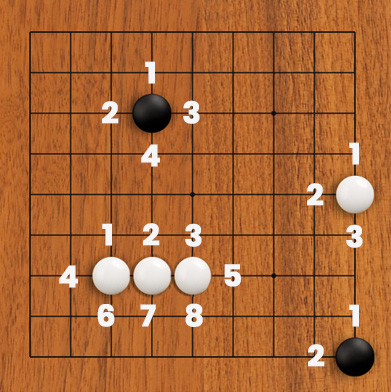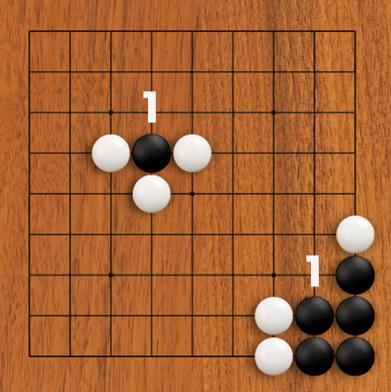| Capturing Opponent’s Stones
The fun part!
While capturing opponent’s stones is not the ultimate goal of Go, it is a way to make points and is certainly fun.
A stone or a group of stones is captured when it no longer has any empty space (vacant intersections) directly next to it (following the lines, NOT the diagonals).

A stone that is placed away from the edge of the board initially has 4 liberties. A stone on the edge has 3 liberties, and a stone in the corner has only 2 liberties! This means that in order to capture a lone stone in the corner, you only need two moves, while in the center you need four. Groups of stones that are directly connected share liberties.

In the example above, Black’s lone stone and the group of 5 stones are both reduced to a single liberty and thus can be captured with the next move (neighboring intersections except 1 are occupied by white stones).
Let’s practice, shall we?
Black to play
In reality, capturing stones is not so easy. Your opponent will not just wait for you to surround their stones but there are some tactics you will learn in later lessons to help you.
Let me get back to this one laterwhat's next?